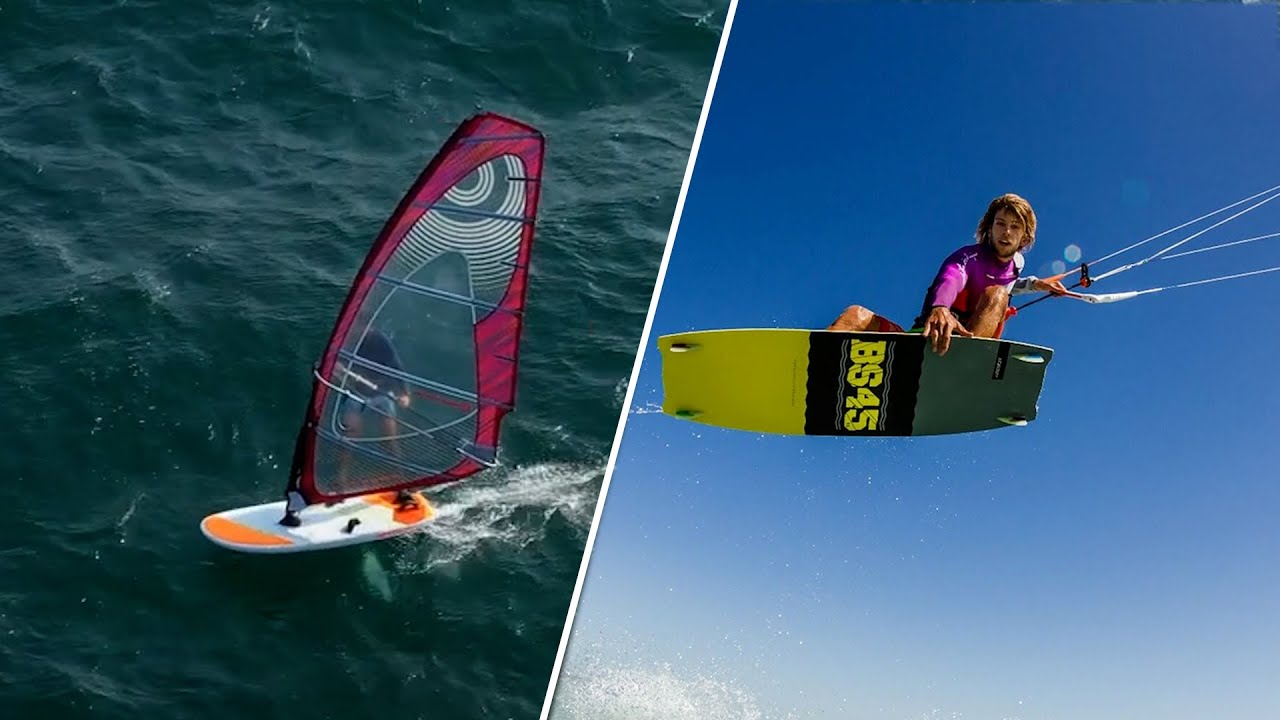Both windsurfing and kitesurfing offer exciting ways to ride the wind and waves, but they have distinct techniques, equipment, and learning curves. If you’re deciding which sport to try, this guide will help you understand the key differences.
1. Equipment Differences
Windsurfing:
-
Uses a board with an attached sail mounted on a mast and boom.
-
The rider controls the sail by shifting body weight and adjusting the boom.
-
Boards vary in size, from wide beginner-friendly models to sleek, high-performance designs.
Kitesurfing:
-
Uses a small board (like a wakeboard) and a large inflatable kite controlled by lines.
-
The rider steers the kite with a control bar while their body is harnessed to it.
-
The kite generates lift, allowing riders to perform jumps and tricks.
2. Learning Curve
Windsurfing:
-
Easier to learn the basics, as the sail provides stability.
-
Progression can be slow when mastering advanced techniques like planing and wave riding.
-
Requires good balance and coordination to control the sail in different wind conditions.
Kitesurfing:
-
Harder to learn initially due to kite control and body coordination.
-
Once kite handling is mastered, riders progress quickly to jumps and tricks.
-
Requires a good understanding of wind direction and kite movement before getting on the board.
3. Wind and Water Conditions
Windsurfing:
-
Can be done in lighter winds (10-15 knots) with larger sails.
-
Works well in both flat water and wave conditions.
-
More freedom in wind direction; windsurfers can ride upwind more easily.
Kitesurfing:
-
Requires moderate to strong winds (12-25 knots) for a good ride.
-
Works best in open waters with steady winds.
-
Riders need more space since kites take up a large area in the air.

4. Maneuverability and Tricks
Windsurfing:
-
Allows for fast carving turns and wave riding.
-
Tricks include jumps, loops, and freestyle spins.
-
More physically demanding, as the sail is directly controlled by the rider’s strength and balance.
Kitesurfing:
-
Allows for higher jumps and aerial tricks due to kite lift.
-
Easier to perform long, controlled jumps with minimal effort.
-
Requires good kite control to land jumps smoothly.
5. Safety and Risks
Windsurfing:
-
Generally safer because the sail is attached to the board, making recovery easier.
-
Less risk of getting tangled in equipment.
-
Falls are usually less severe since there’s no kite pulling the rider.
Kitesurfing:
-
Higher risk due to kite power and wind gusts.
-
Riders can get dragged by the kite if they lose control.
-
Risks include getting tangled in kite lines or being launched in strong winds.
6. Cost and Accessibility
Windsurfing:
-
Equipment cost: $1,500–$3,000 for a full setup.
-
More locations available, as windsurfing can be done in lakes, oceans, and rivers.
-
Storage and transport can be tricky due to the size of the sail and board.
Kitesurfing:
-
Equipment cost: $1,500–$2,500 for a kite, board, harness, and bar.
-
Requires open spaces with steady winds, limiting location options.
-
Easier to travel with, as kites pack down small compared to windsurfing rigs.
Which One Should You Choose?
| Factor | Windsurfing | Kitesurfing |
|---|---|---|
| Learning Curve | Easier to start, but progression is slower | Harder at first, but quicker progression |
| Wind Needs | Works in lighter winds | Needs moderate to strong winds |
| Tricks & Jumps | Wave riding and freestyle moves | Higher jumps and aerial tricks |
| Safety | Safer and more controlled | More risks due to kite power |
| Cost | More expensive due to multiple sails | Slightly cheaper but requires lessons |
| Travel | Bulkier equipment, harder to transport | Easier to pack and travel with |
Final Thoughts
Both sports offer unique thrills. If you prefer wave riding and a more physical experience, windsurfing is a great choice. If you want to soar through the air and perform jumps, kitesurfing might be more appealing.
Ultimately, the best way to decide is to try both and see which one suits your style!











